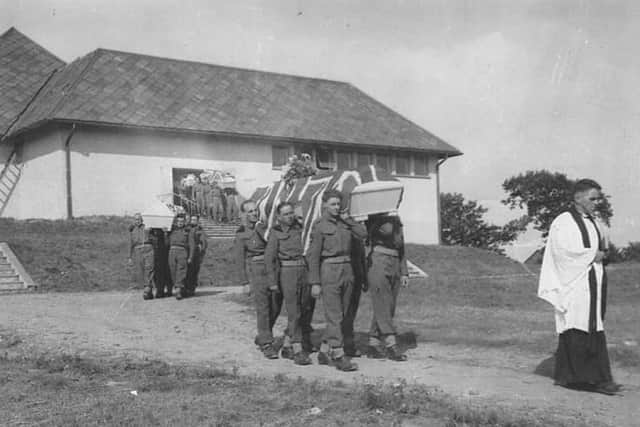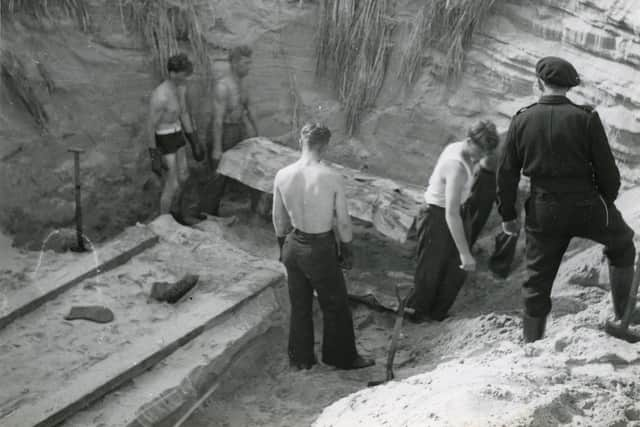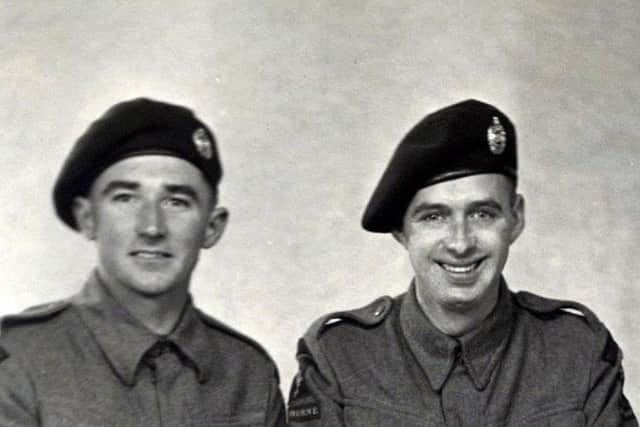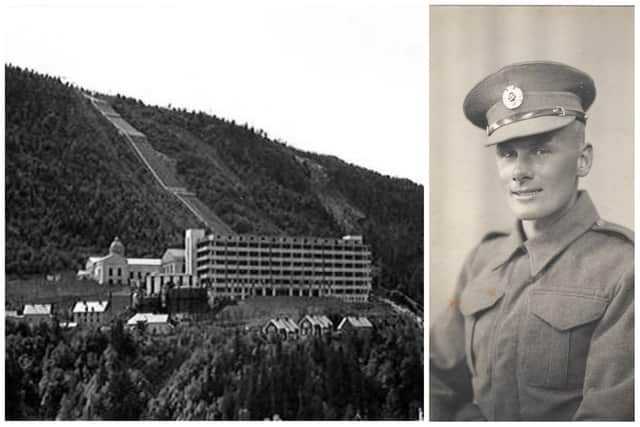The Scots who tried to stop the Nazis creating an atomic bomb
On a freezing night in November 1942, they took off from a tiny airstrip in the far north of Scotland. Jammed into two plywood gliders and carrying pocketfuls of explosives, their mission was simply to stop the Nazis from creating an atomic bomb.
Nine Scots were among 48 men on board for Operation Freshman which was set up to destroy the Vemork hydroelectric power plant in Telemark in the southwest of Nazi-occupied Norway. It was here that heavy water - the material needed to make a nuclear reactor – was being produced in abundance.
Advertisement
Hide AdAdvertisement
Hide AdAfter a three-and- a- half hour flight from RAF Skitten near Wick – when the two gliders were each towed by a rope connected to a Halifax bomber in an operational first – poor weather and failings in the guidance system led to three of the aircraft crash landing in the Norwegian mountains as the ropes froze, took on extra weight and snapped in the sub-zero night. Of those 48 on board, 41 died from either the crash landing, execution or murder by German army or security services.


Five Scots, the youngest just 20, died on impact and the further horror of war – and its crimes – awaited the survivors.
Corporal James Dobson Cairncross, 9th (Airborne) Field Company, Royal Engineers, was murdered by the Gestapo in Stavanger a few days after capture, either by morphine injection or by gunshot to the back of the head while walking down the stairs. He was from Hawick, 22-years-old and his body has never been recovered after it was thrown into the sea.
Lance Corporal Alexander Campbell, 24, of Grangemouth and Sapper James May Stephen, 27, of Fraserburgh, both of the 261st (Airborne) Field Park Company, Royal Engineers, were among 17 survivors on the second glider. The day after the crash they were blindfolded, lined up and shot near an army camp at Slettebø, near Egersund. Their bodies were dumped in shallow graves on a nearby beach before being discovered in 1945 and reburied with full military honours in Stavanger.
Families were left for years not knowing what happened to their loved ones sent to stop the Nazi bomb.


Historical researcher Dr Bruce Tocher, a Scot now based in Stavanger, has spent the past four years examining Operation Freshman and said it was a “tragedy” the sacrifices made by the men – and the horrors they faced – were so little known.
Operation Freshman was a precursor to the successful 1943 Operaton Gunnerside when Norwegian commandos, who were prepared for the mission at a training camp at Glenmore in the Cairngorms, halted production at Vemork with the mission later retold in the Hollywood film Heroes of Telemark starrring Kurt Douglas.
Dr Tocher, who is due to publish a book on Freshman next year, said: “I cannot figure out why Freshman is not better known. There is more talked about the Heroes of Telemark which is really a Norweigan operation and here we have a very British operation, with all these Scots involved.”
Advertisement
Hide AdAdvertisement
Hide AdHe added: "A lot of them had kids, a lot of them were married and their families were really badly treated. They weren’t told for years about what happened. I have got some completely heartbreaking letters from wives to the military asking ‘can you not tell me something’.


"You cannot believe how hard-hearted it was.”
Scotland’s proximity to Norway put it at centre stage of the mission to destroy the Vemork power plant with airfields in Orkney and Shetland, as well as RAF Peterhead, scouted as potential departure points.
Indeed, Scotland's role in the mission to disable Vemork began in 1940 when French security services smuggled heavy water out of the power plant with the consignment landing at an airfield in Perth after a last minute decision to load the flasks onto a different flight, according to Edinburgh-based historian Alex Orr.
Dr Tocher said there had been “too many risk factors” in Operation Freshman. Paratroopers were considered but thought too risky given the potential for a scattered landing. Gliders, which could come down relatively discreetly with all men and equipment together, were selected to land in an area marked by the Norwegian resistance.


Dr Tocher said : “It was the first time they used gliders in combat, first time they had flown gliders at night, it was the first glider tow they had ever made and to try and land on a pin prick in Norwegian mountains in November in the dark --well, there were are a lot of things against them.”
On landing, it was planned the men would walk five hours in the snow to Vemork, destroy the plant and its generators and then head on foot into Sweden. Loaded with explosives and 10-days worth of food, the men were carrying a huge amount of weight.
But on coming close to the landing spot, cloud obscured the descent with the bombers turning back towards Scotland. The ropes started to strain on the extended journey through the wintry night before finally snapping under the weight of ice.
Only one Halifax bomber made it back to Scotland. Tail gunner and Flight Sergeant Thomas Conacher, 296 Squadron, RAF, was 21 and from Plains, Airdre. He survived the war with Dr Tocher meeting his daughter at an event last year.
Advertisement
Hide AdAdvertisement
Hide AdDr Tocher has traced families of 37 of the 48 airmen who took part in Operation Freshman, with around 50 relatives attending a memorial service in Stavanger last year to mark the 80th anniversary of the doomed exercise to stop the atomic bomb – and the associated atrocities faced by those deployed to the mission.
Comments
Want to join the conversation? Please or to comment on this article.